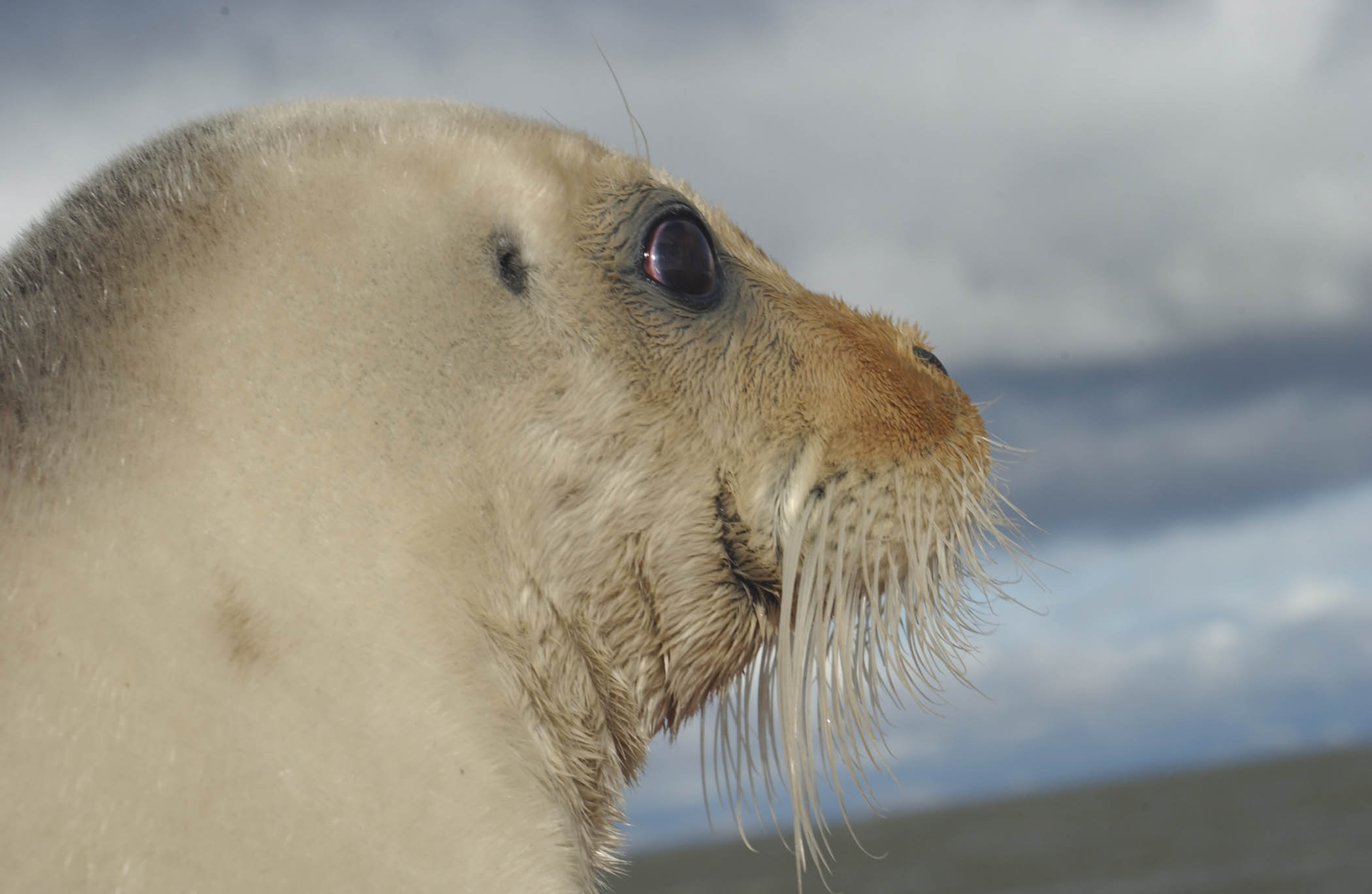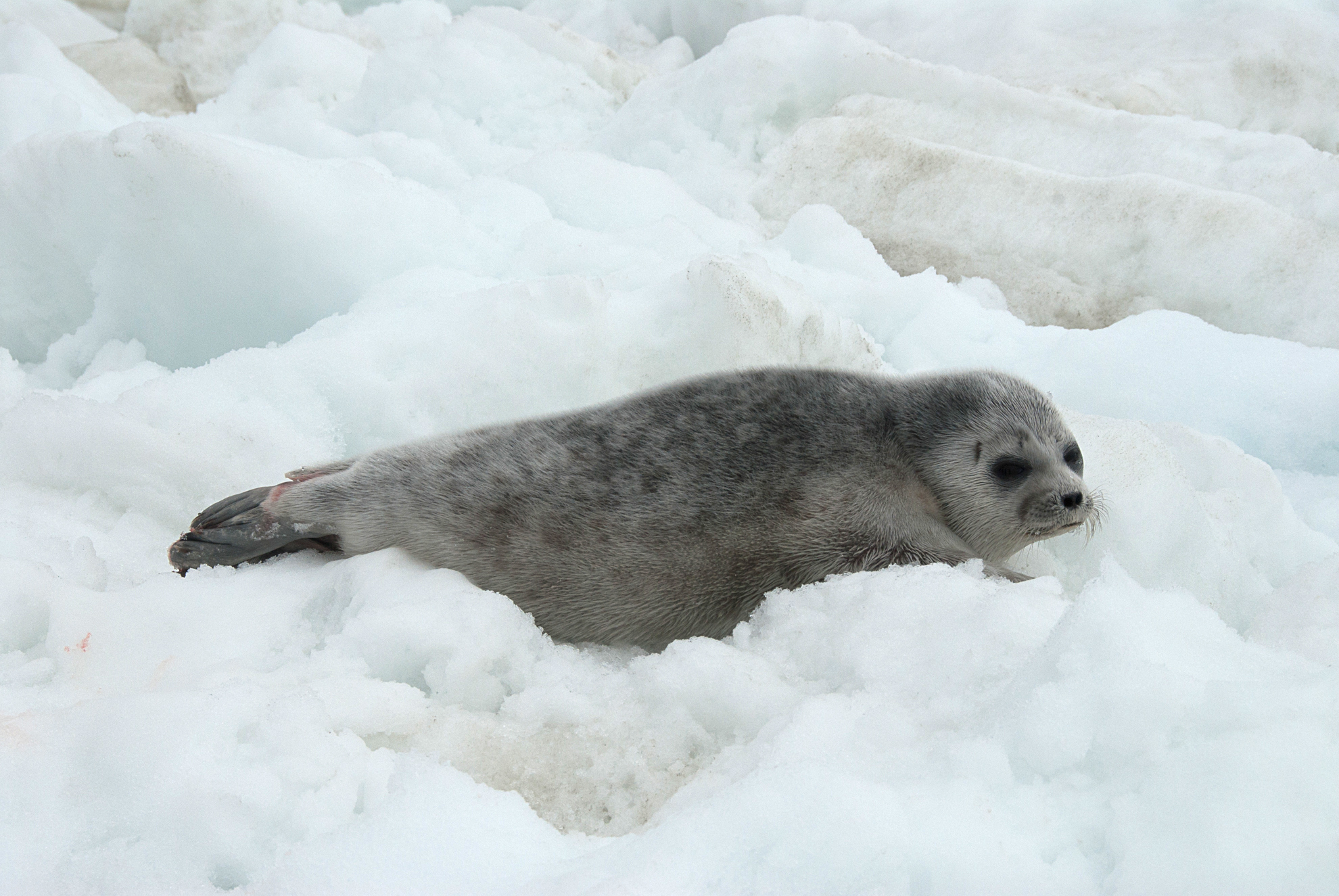US regulators propose habitat protections for Alaska’s threatened ice seals
The proposed protected areas for ringed and bearded seals cover vast sections of Alaska's Arctic waters.

Eight years after ringed and bearded seals were granted Endangered Species Act protections, the federal government has released its plans to designate critical habitat for both types of ice-dependent seals.
The National Oceanic and Atmospheric Administration proposes critical habitat designations for the northern Bering Sea, the U.S. portion of the Chukchi Sea and part of the U.S. portion of the Beaufort Sea. The designations, if made final, establish areas where extra protections will be required to ensure the safety of the two seal species, both listed as threatened.
The proposals from NOAA Fisheries, described in Federal Register notices published on Friday, are the result of a late-2019 legal settlement between the Trump administration and the Center for Biological Diversity, the environmental organization that originally petitioned for Endangered Species Act listings of the seals.
The Arctic population of ringed and the Beringia population of bearded seals — the populations that are the subjects of the proposed designations — use generally the same habitat, areas with sea ice that the animals use for critical life stages like giving birth to and nursing pups, molting and resting. There are some slight differences in the proposed critical habitat for the two species; the Beaufort Sea section of proposed bearded seal critical habitat is smaller than that for the ringed seal critical habibat.
The areas were chosen for based on the “presence of one or more of the essential physical and biological habitat features,” Jon Kurland, NOAA Fisheries’ assistant regional administrator for protected resources, said by email. For Arctic ringed seals, that means sea ice suitable for pupping, nursing, basking and molting, along with availability of food. For the Beringia bearded seals, it also means sea ice suitable for pupping, nursing and molting, as well as “acoustic conditions that allow for effective communication by bearded seals for breeding purposes,” plus access to food, he said.
The designated critical habitats for both ringed and bearded seals both extend to the maritime boundaries with Russia and Canada. Under the Endangered Species Act, critical habitat is limited to areas of U.S. jurisdiction, Kurland said by email.

The ice seals’ critical habitat designations have been much delayed.
Designation of critical habitat is required whenever a species is listed under the Endangered Species Act, with some limited exceptions, such as cases where habitat cannot be identified. Critical habitat designations are supposed to come at the same time as final listing or, if more study is needed, within a year, under the Endangered Species Act.
For the Center for Biological Diversity, the new critical habitat proposals — now that they have been issued — mark a victory in an administrative and legal battle that dates back to its 2008 listing petitions.
“These vital habitat protections will help these adorable seals have a shot at surviving our rapidly warming world, but we need to do much more,” Emily Jeffers, an attorney at the center, said in a statement. “Melting sea ice poses a dire threat to these ice-dependent seals. The proposed rules underscore the recklessness of Trump’s push to open the Arctic to more oil drilling. Ringed and bearded seals will disappear forever if we don’t drastically reduce our carbon emissions.”
Both of the proposed rules would designate vast swaths of the Bering, Chukchi and Beaufort seas as protected critical habitat.
The center noted that designated critical habitat, if made final, includes waters offshore of the National Petroleum Reserve in Alaska and the Arctic National Wildlife Refuge. The Trump administration has just made final an activity plan that would expand oil development in the NPR-A, and last week it held a first-ever lease sale for the Arctic refuge that drew paltry bidding, almost all of it from an Alaska state agency, the Alaska Industrial Development and Export Authority.
For the oil industry, the critical habitat proposals “cause some alarm” because they are so geographically expansive, said Kara Moriarty, executive director of the Alaska Oil and Gas Association.
“Certainly, at first blush, we are pretty concerned about the enormous expanse of area that has been proposed,” she said.
The amount of territory proposed for critical habitat designation appears to be the most in the history of the Endangered Species Act, she said.
That has negative implications for oil operations, even though Arctic Alaska oil activities are not considered to be major threats to the seals, Moriarty said. “Critical habitat does man a higher level of consultation and permitting procedures and expense,” she said.
The seals’ listings are based on Arctic climate change and the retreat of the sea ice that is vital to the animals’ survival and reproduction. Ringed seals also depend on snow atop sea ice, which they use for lairs to protect their pups, and rapid warming is erasing that snow as well.
Even though climate change is the main threat to the seals, NOAA’s critical habitat proposals note additional threats from industrial activities. Those include oil and gas activities; the proposals cite seismic surveys and construction of artificial offshore islands as some examples of potential disruptions. They also include marine shipping and transportation, which is increasing in the Bering Strait and Arctic regions as ice weakens and retreats. Vessel traffic, especially if conducted by icebreakers traveling through ice, has the potential to directly harm seals, and vessel pollution and underwater noise pose other threats, the proposals said.
The oil industry in particular has pushed back against Endangered Species Act protections for the ice seals.
AOGA, the state of Alaska, the North Slope Borough and other entities had sued to overturn the threatened listings entirely, but those efforts were thwarted by appeals courts. More recently, NOAA Fisheries in November denied a petition from the state, the borough and allied entities seeking to remove the threatened listing for ringed seals.
NOAA Fisheries will be accepting comments on its critical habitat proposals through March 9.